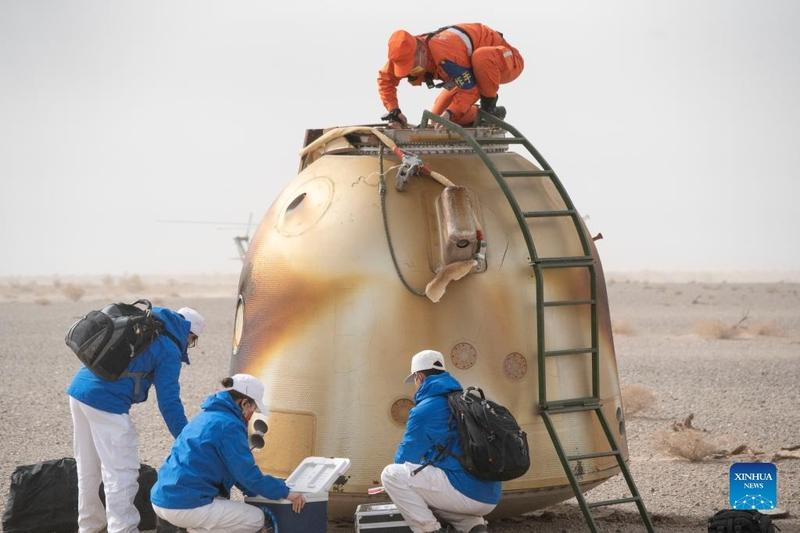 The return capsule of the Shenzhou XIII manned spaceship lands successfully at the Dongfeng landing site in north China's Inner Mongolia Autonomous Region, April 16, 2022. (PHOTO/XINHUA)
The return capsule of the Shenzhou XIII manned spaceship lands successfully at the Dongfeng landing site in north China's Inner Mongolia Autonomous Region, April 16, 2022. (PHOTO/XINHUA)
BEIJING - After orbiting Earth for six months, the three crew members of China's Shenzhou XIII mission have departed from the Tiangong space station and returned to the mother planet on Saturday morning, finishing the nation's longest manned spaceflight.
Major General Zhai Zhigang, who was the mission commander, Senior Colonel Wang Yaping and Senior Colonel Ye Guangfu breathed fresh air for the first time after the half-year space journey as ground recovery personnel opened the hatch of their reentry capsule at 10:03 am.
READ MORE: Shenzhou crew completes docking test with cargo craft
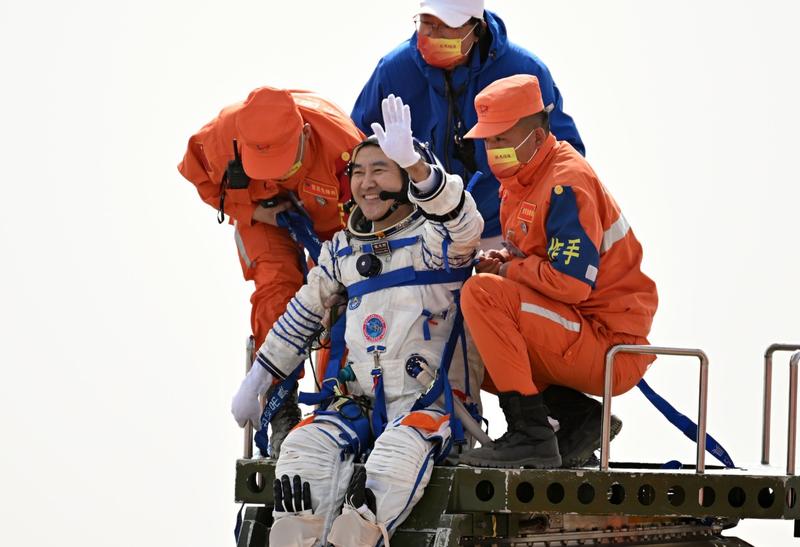 Major General Zhai Zhigang waves as he returns from the Shenzhou XIII mission. (PHOTO / XINHUA)
Major General Zhai Zhigang waves as he returns from the Shenzhou XIII mission. (PHOTO / XINHUA)
The capsule touched down on Earth at the Dongfeng Landing Site in northwestern China's Gobi Desert at 9:56 am after flying nine hours in a reentry trajectory.
I am feeling very good. We want to report to the motherland and the people that we have successfully completed the Shenzhou XIII mission. We wish to thank President Xi for his care and attention. We thank all the Chinese people for their support and encouragement.
Zhai Zhigang, Major General
The reentry capsule touched down on the Dongfeng Landing Site in the Gobi Desert at 9:57 am.
"I am feeling very good. We want to report to the motherland and the people that we have successfully completed the Shenzhou XIII mission. We wish to thank President Xi for his care and attention. We thank all the Chinese people for their support and encouragement. Our gratitude also goes to all of those involved in our mission who accompanied us day and night," Zhai, the mission commander, told China Central Television in a live program on the State broadcaster.
Zhai and his crewmates spent 183 days in an orbit about 400 kilometers above the Earth since their Shenzhou XIII spacecraft was launched on Oct 16 by a Long March 2F carrier rocket from the Jiuquan Satellite Launch Center in the Inner Mongolia autonomous region. They were the second inhabitants of China's permanent space station named Tiangong, also known as Heavenly Palace.
ALSO READ: Shenzhou XIII astronauts conduct second spacewalk
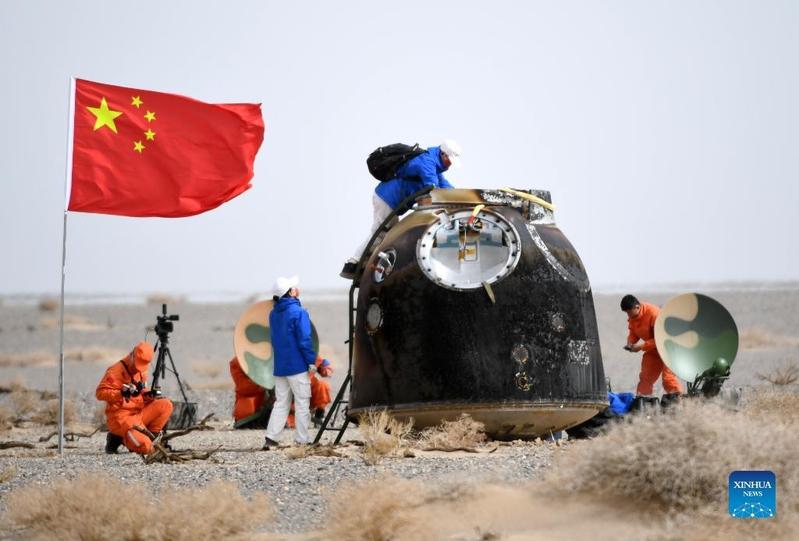 The return capsule of the Shenzhou XIII manned spaceship lands successfully at the Dongfeng landing site in north China's Inner Mongolia Autonomous Region, April 16, 2022. (PHOTO/XINHUA)
The return capsule of the Shenzhou XIII manned spaceship lands successfully at the Dongfeng landing site in north China's Inner Mongolia Autonomous Region, April 16, 2022. (PHOTO/XINHUA)
The crew has set a new record for China's longest spaceflight, almost doubling the previous record of 92 days created by their peers in the Shenzhou XII mission who traveled with Tiangong from mid-June to mid-September last year.
During the Shenzhou XIII mission, the astronauts carried out two spacewalks that totaled more than 12 hours. They mounted components on the station's robotic arm and used it to practice extravehicular maneuvers, verified the arm's capabilities and its compatibility with the crew's needs, examined the safety and performance of support devices for extravehicular activity and also tested the functions of their extravehicular suits.
Wang took part in the first spacewalk on Nov 7, becoming the first female Chinese spacewalker.
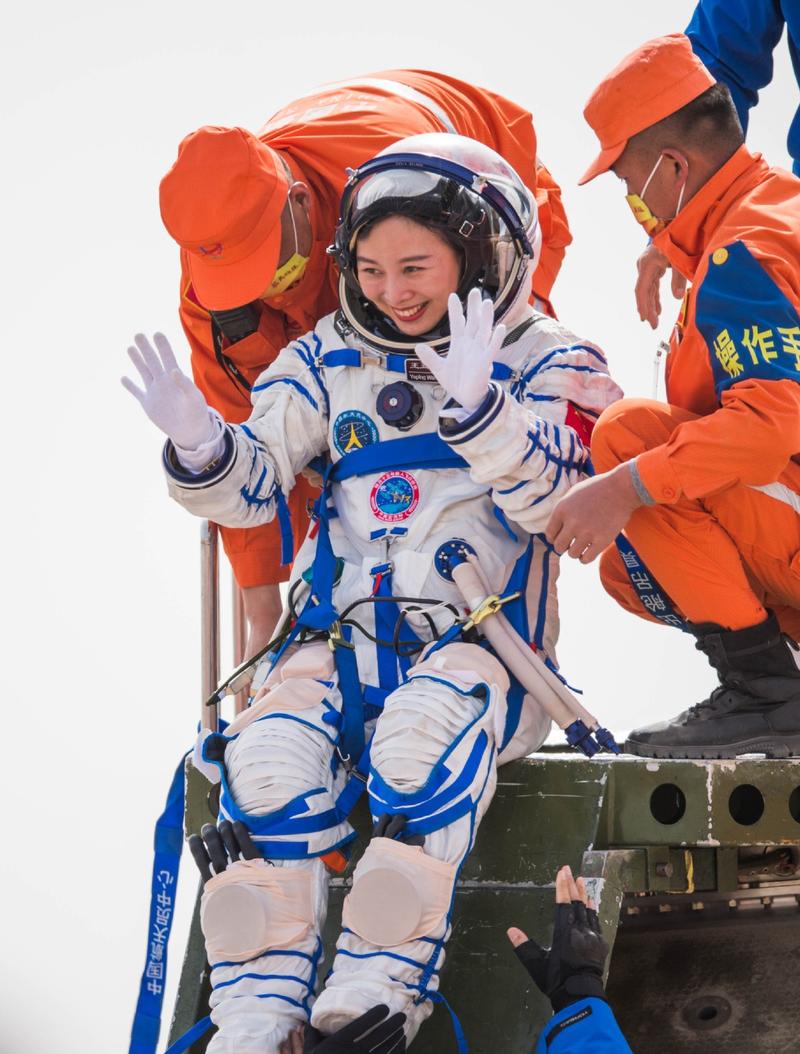 Senior Colonel Wang Yaping waves as he returns from the Shenzhou XIII mission. (PHOTO / XINHUA)
Senior Colonel Wang Yaping waves as he returns from the Shenzhou XIII mission. (PHOTO / XINHUA)
The crew members also carried out two science lectures from the space station for Chinese students. In those lectures, which were livestreamed worldwide by China Media Group, the astronauts showed viewers how they live and work inside the gigantic space station and the physical phenomena only possible in microgravity such as "disappearing buoyancy" and a "water ball".
In one experiment, Wang used a Bing Dwen Dwen toy, the popular mascot of the Beijing 2022 Olympic Winter Games, to display how objects fly in weightless environment.
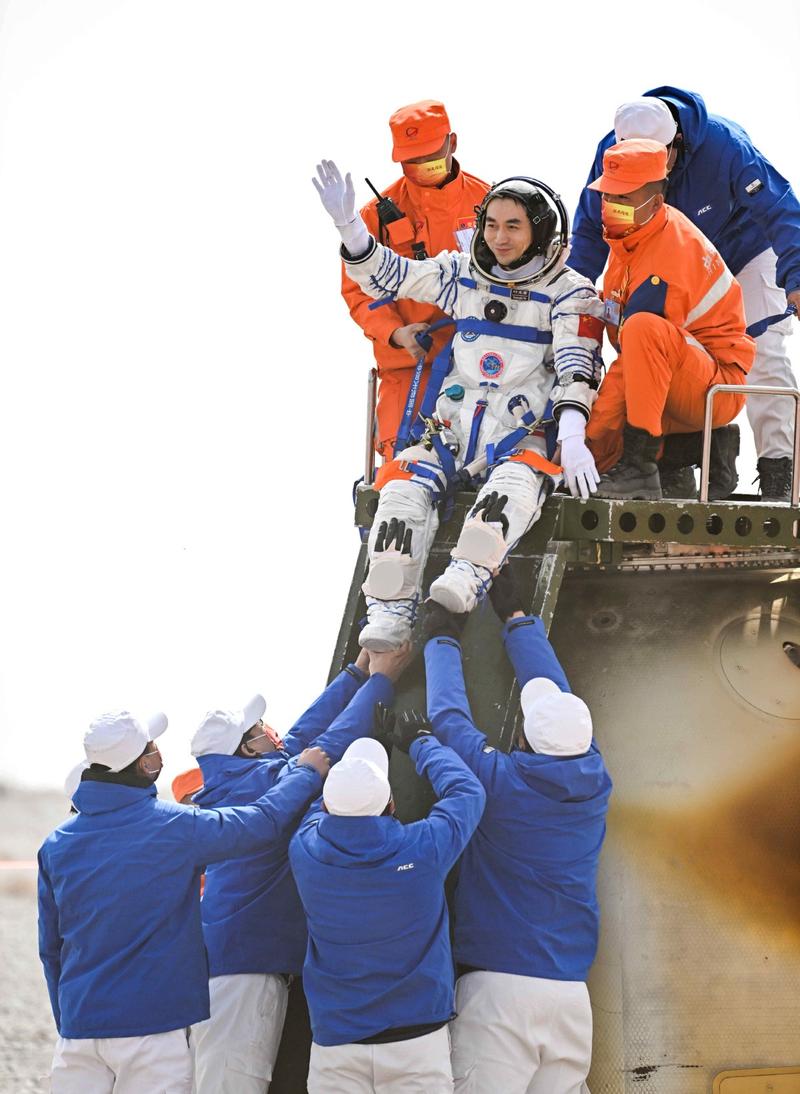 Senior Colonel Ye Guangfu waves as he returns from the Shenzhou XIII mission. (PHOTO / XINHUA)
Senior Colonel Ye Guangfu waves as he returns from the Shenzhou XIII mission. (PHOTO / XINHUA)
The Shenzhou XIII's space-based lessons marked the start of the Tiangong Class series, China's first extraterrestrial lecture series that aims to popularize space science and inspire youngsters to pursue their "science and space dreams", according to the manned space agency.
The classes were also special to Wang as it was her who carried out the nation's first space-based lecture inside an experimental space station module to more than 60 million Chinese students during the Shenzhou X mission on June 2013. That lecture made China the second country, following the United States, to have delivered a lesson to schoolchildren from space.
In early February, the astronauts spent Spring Festival, or Chinese Lunar New Year, inside the orbiting station, becoming the first Chinese people to celebrate the country's most important traditional festival in outer space. They appeared in a live broadcast gala and sent their best wishes to Chinese people.
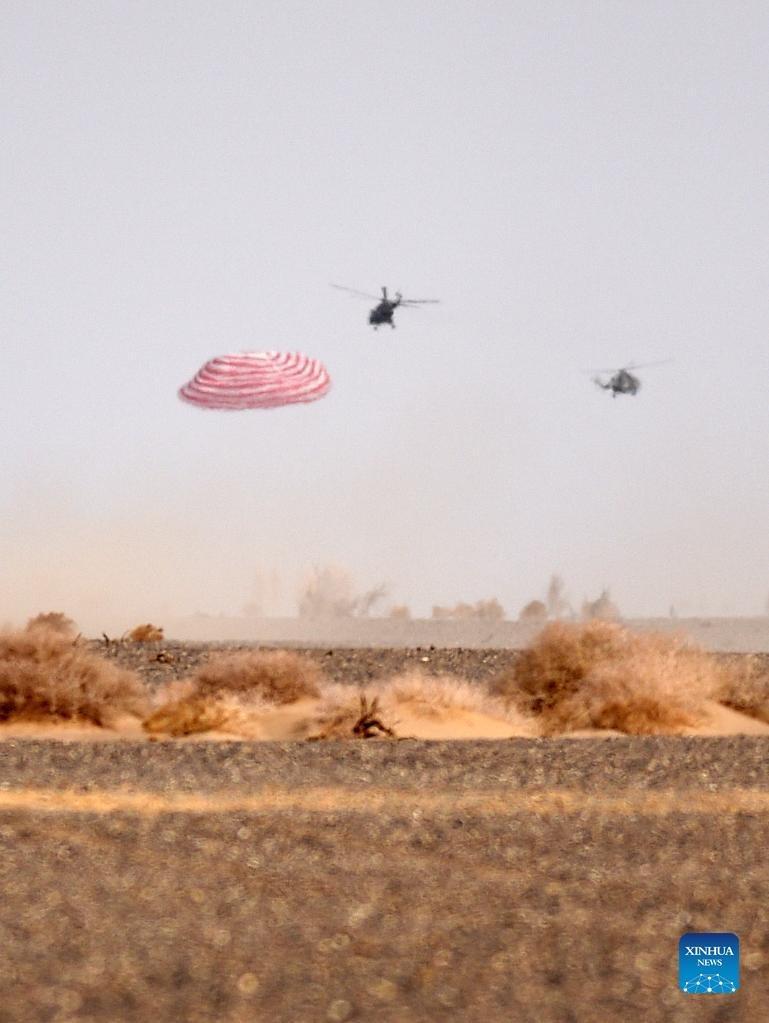 The return capsule of the Shenzhou XIII manned spaceship lands successfully at the Dongfeng landing site in north China's Inner Mongolia Autonomous Region, April 16, 2022. (PHOTO/XINHUA)
The return capsule of the Shenzhou XIII manned spaceship lands successfully at the Dongfeng landing site in north China's Inner Mongolia Autonomous Region, April 16, 2022. (PHOTO/XINHUA)
Before the end of 2022, China will send six astronauts in the Shenzhou XIV and XV missions with two space lab components as well as two robotic cargo spaceships to dock with Tiangong, completing the massive orbiting outpost, the largest space-based infrastructure the nation has ever built.
Upon its completion, Tiangong will be manned regularly by groups of three astronauts in periods lasting several months. During handovers to new three-astronaut groups, the station will accommodate up to six astronauts.


